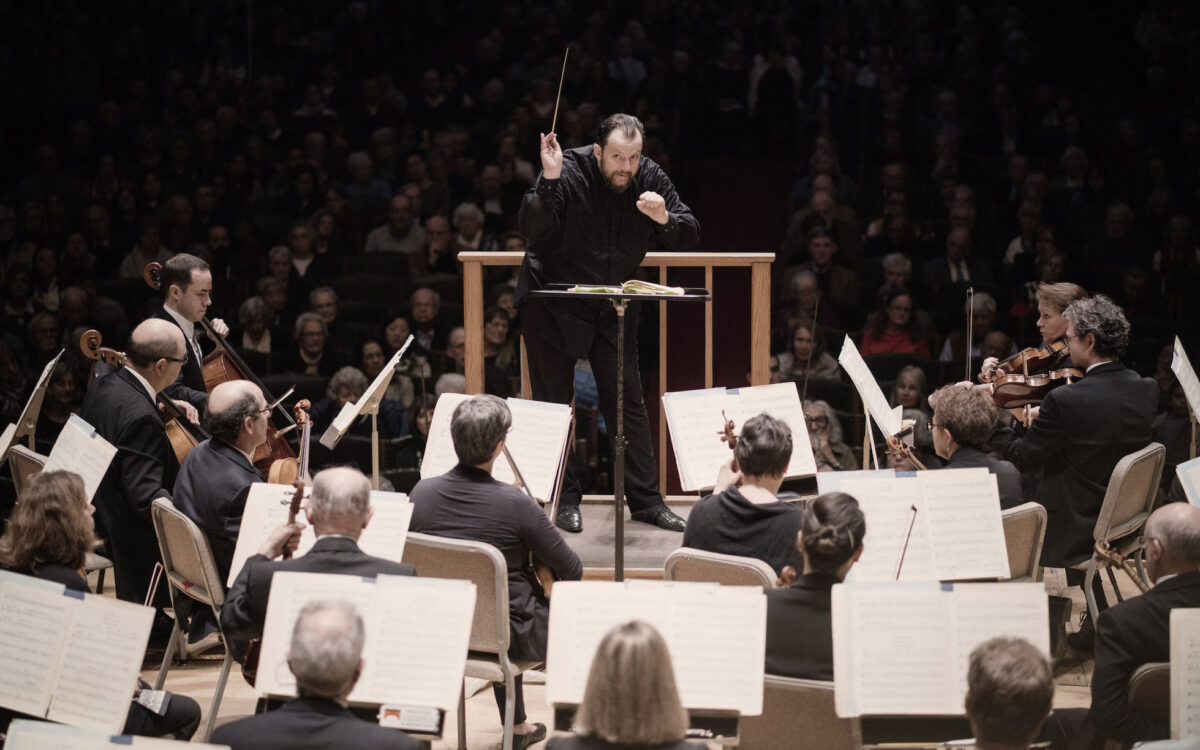Concerto for Orchestra
Béla Bartók was born in Nagyszentmiklós, Transylvania (then part of Hungary but now absorbed into Romania), on March 25, 1881, and died in New York on September 26, 1945. The Concerto for Orchestra was commissioned in the spring of 1943 by Serge Koussevitzky through the Koussevitzky Music Foundation in memory of his wife Natalie Koussevitzky, who had died in 1942. Bartók composed the work between August 15 and October 8, 1943. Koussevitzky led the Boston Symphony Orchestra in the first performances on December 1 and 2, 1944, repeating the work in Boston on the 29th and 30th and then giving the first New York performances on January 10 and 13, 1945, at Carnegie Hall. At some point Bartók revised the ending, extending the original by some fifteen measures to create the version that is typically heard today.
The score of the Concerto for Orchestra calls for 3 flutes (3rd doubling piccolo, 3 oboes (3rd doubling English horn, 3 clarinets (3rd doubling bass clarinet), 3 bassoons (3rd doubling contrabassoon), 4 horns, 3 trumpets (a 4th trumpet line is marked ad lib.), 3 trombones, tuba, timpani, side drum, bass drum, cymbals, triangle, 2 harps, and strings (violins I and II, violas, cellos, and double basses).
So well loved is Bartók’s Concerto for Orchestra in all parts of the world that it is hard now to imagine the hostility that greeted his music in the period between the wars, and the horror his music inspired both in concert audiences and in critics who should have known better. Many of his works are severely uncompromising, it is true, and the staying power of modernism had not yet been accepted. But the flow of time that slowly conditioned audiences (even critics) to Bartók’s supposed “difficulty” had a simultaneous effect on Bartók himself. In his last works he had mellowed to an extraordinary degree, with the result that the Concerto for Orchestra, one of the last pieces he completed, is now a staple part of concert programs, beloved by audiences and virtuoso orchestras alike.
Bartók found the process of compromise exceedingly difficult to come to terms with. The story of his exile in America during the war and his death in poverty and distress in a New York hospital in 1945 is one of the saddest chronicles in music. He was so sensitive and so deeply attached to his native Hungary that to be uprooted from home, and for such gruesome reasons, had a catastrophic effect on his spirit. It is a miracle that he wrote anything at all in those years, let alone works as profoundly appealing as the Sixth Quartet and the Piano Concerto No. 3. He wrote, of course, in response to commissions, and desperately needed the money they offered. Without Serge Koussevitzky, long-term music director of the Boston Symphony and a champion of new music of every kind, and without his Hungarian friend, the violinist Joseph Szigeti, to spur him on, Bartók might never have undertaken so large a work as the Concerto for Orchestra. What is certain is that once committed to it, and despite every discouragement, Bartók put everything he had into the piece, applying that meticulously critical ear and the exalted craft of a very experienced composer.
Koussevitzky and the Boston Symphony Orchestra gave the first performances of this great 20th-century masterpiece in Symphony Hall on December 1 and 2, 1944, repeating it in Boston on December 29 and 30 (the performance on the 30th was broadcast) and following that with the New York premiere in January 1945. The work was slightly revised by Bartók before publication; two alternative endings appear in the published score. The work was designed for a large virtuoso orchestra of the highest class, hence its title, and the instruments are often mercilessly exposed. It also requires ensemble playing of great precision and a sense of color and vitality of which Bartók was a master.
The first movement is conventional (like a Beethoven symphony) in offering a slow introduction leading into a vigorous Allegro. The bare fourths that make up most of the melodic intervals at the start retain their importance throughout the work. The Allegro, reached by an exhilarating acceleration, is very compact, with contrast from a gentler oboe theme circling on two adjacent notes and an explosive fugato for the brass in the middle, the subject of which prominently features the interval of a fourth, like an awkwardly stretched stride.
The second movement, “Game of Pairs,” isolates wind pairs in turn, each with its own interval. The two bassoons are in sixths, the two oboes in thirds, the two clarinets in sevenths, the two flutes in fifths, and the two trumpets, muted, in seconds. A brass chorale intervenes, while the side drum maintains the old rhythm, and the pairs return, each now supported and decorated by extra help. There are now three bassoons, for example, not two; two clarinets assist the two oboes, two flutes assist the two clarinets. The pattern is simple but very affecting, and at the end a serene dominant seventh permits each pair to come to rest on its “own” interval.
The Elegia takes us into Bartók’s private world, with memories of his favorite “night music.” Shimmers from the harp, flutters from the flute and clarinet, a background of softly rolling timpani—these create an atmosphere of mystery and expectation. Even so, the entry of the full orchestra in the central section is brutal and all too earthbound, recalling a theme heard in the first movement’s introduction. It takes a long time to restore the magical atmosphere with which the Elegia began, but serenity eventually returns, fading into the night with some soft piping from the piccolo and a few discreet notes from the timpani.
The “Interrupted Intermezzo” starts with a wistful folk-like melody on the oboe, and then offers a broader, haunting theme, first on the violas, richly supported by the harps, and the folksy tune returns. The interruption is an appalling piece of grotesquerie, with a quotation from Shostakovich’s Seventh Symphony served up in cap and bells. Laughter and mockery are plain to all, and the return to Bartók’s noble theme carries something of the painful nostalgia with which he longed for his distant roots.
The finale is a spontaneous burst of energy, presented with all the blatant extroversion conveyed by the horns’ opening call. The first break in the scampering texture delivers up a little fugue on the horn-call theme, started by the second bassoon, and rapidly inverted. A folk tune breaks in on the oboe and the scampering resumes. The real fugue fills a complex stretch of the movement, equivalent perhaps to a development, and its subject returns as a resplendent brass statement at the end, while wind and strings rush from end to end of their range in a stampede of breathless brilliance.
Like Shostakovich, Bartók was an artist for whom suffering became a permanent feature of reality. Both composers had to find ways to escape—or at least to seem to escape—from the oppression of misfortune and pain. Both wrote music of noisy high spirits, and in each case we have to read the irony in the music even while we catch the infectious vitality of that brilliant orchestral display. Bartók may have lampooned Shostakovich in his fourth movement, but he probably never understood the complex disguises that Shostakovich had to assume in order to survive under a regime that was as intolerant of high artistry as the Hungary from which Bartók was himself forced to flee. No music has so many layers of meaning as this, which is why we can return to it again and again with pleasure and satisfaction.
Hugh Macdonald
Hugh Macdonald was for many years Avis Blewett Professor of Music at Washington University in St. Louis. A frequent guest annotator for the BSO, he has written extensively on music from Mozart to Shostakovich, including biographies of Berlioz, Bizet, and Scriabin, and recently completed a book on the operas of Saint-Saëns.
Since the BSO's world premiere performances with Serge Koussevitzky conducting in December 1944 (see the start of this program note), the Boston Symphony Orchestra has played the Concerto for Orchestra dozens of times. The most recent performances prior to this season were under Andris Nelsons' direction in January 2020.



